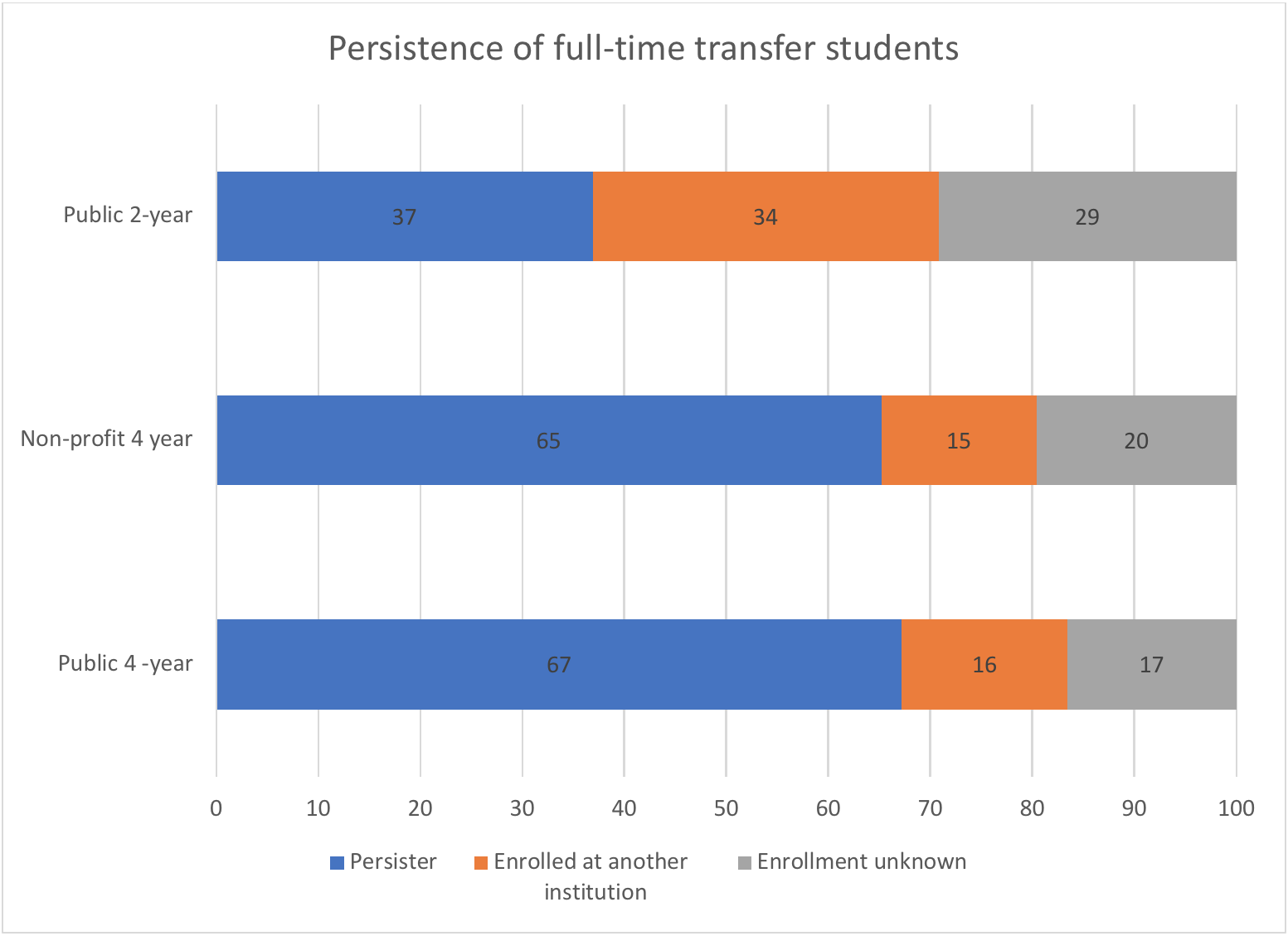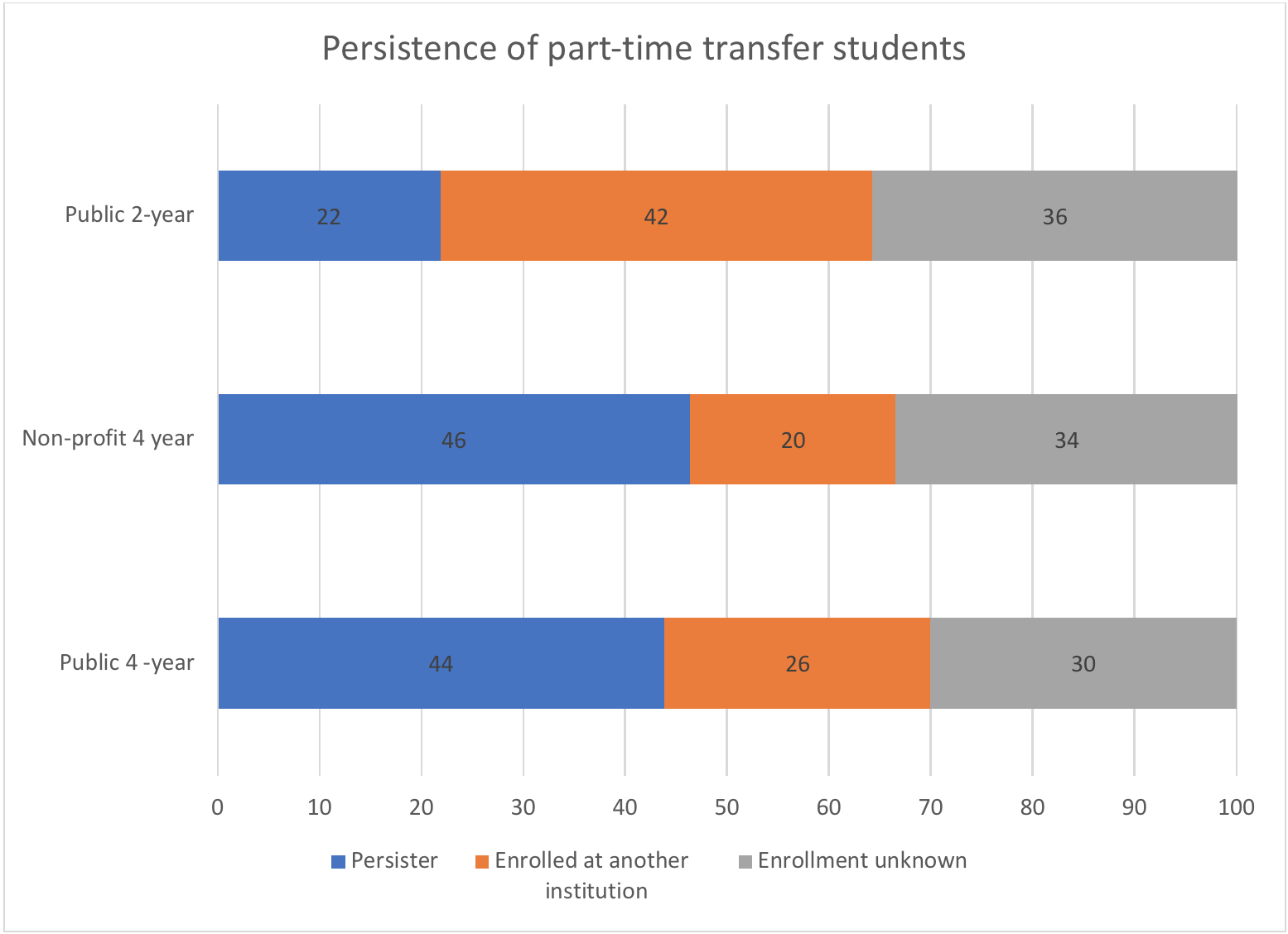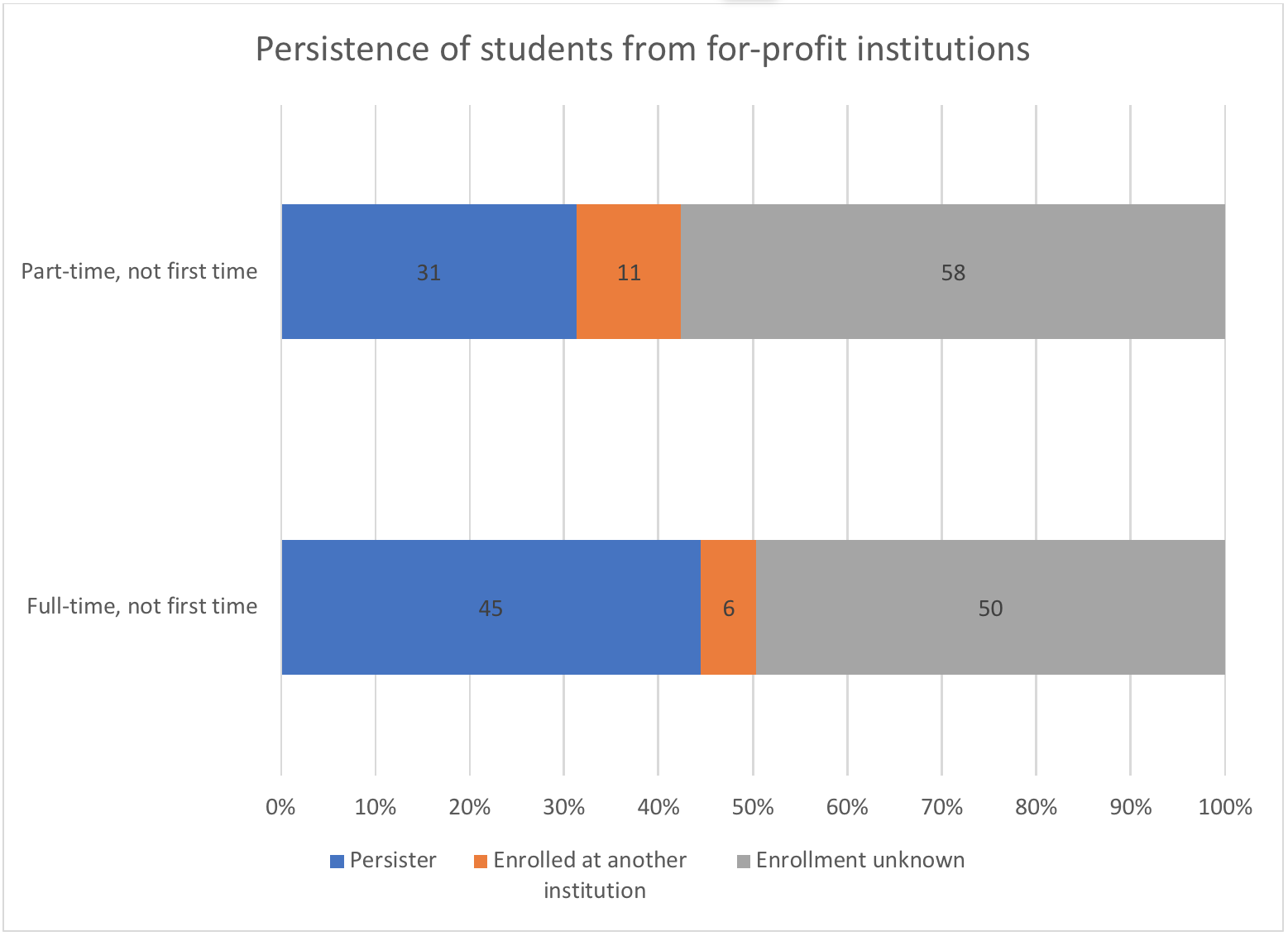Published on
Making Sense of the New Transfer Student Persistence Metrics

We have that answer now.
Full-Time/Not-First-Time
Using data from the 2008 cohort for full-time (12 credits or more), not-first-time students, the numbers for public 4-year, non-profit 4-year, and public 2-year schools are surprisingly similar. The number of students who appear to have dropped out is fairly small. Only 17 percent at the public, 20 percent at the non-profit, and 29 percent at the public 2-years did not persist or enroll at another institution.
Part-Time/Not-First Time
The numbers for part-time students are, not surprisingly, worse. We know that part-time students face major challenges in completion. The only surprise here is that these results are not as bad as we might have expected. Again, they are similar across institution type, as the public 4-years lost 30 percent of this group, non-profits lost 34 percent, and public 2-years lost 36 percent. Note the large number from both charts in the public two-years who transferred (34 percent among full-time/not-first-time and 42 percent among part-time/not-first-time). This is a sign that the public two-year institutions are doing their job of helping students prepare for transfer, even for the vulnerable population of part-time, not-first-time students.
For-Profit Four-Year Institutions Come Out Badly in this Analysis
The drop-out rates for full-time/first-time students in for-profits is a truly abysmal 68 percent. The observers of this sector point out that most for-profits are not built for that population—they are built for adult students. How do they perform for the population that is composed of not-first-time students? The answer is “poorly.”
Having 50 percent of full-time students drop out and a mere 6 percent go on to another institution reveals the major problems still faced by the for-profit sector. For part-time/not-first-time students, the for-profit sector loses 58 percent to drop-out. Only 31 percent of part-time/not-first-time students graduated. Clearly, the 4-year for-profit sector underperforms its public and non-profit colleagues. As the U.S. Senate’s Committee on Health, Education, Labor, and Pensions reported in 2012, for-profits spend their money on marketing and profits, and too little is spent on teaching and service to students.
How Do We Best Support Transfer Students?
There is a bevy of options available to institutions that want to better support transfer students. Improving transfer policies is first among these options. A 2017 GAO report says that transfer students lose “an estimated 43 percent of college credits when they transferred,” so this is no small issue for U.S. higher education. Making sure that transfer students bring all of their passing credits is the first step in improving the transfer experience. Supporting students through the concept of guided choice, narrowing the choices a student makes, helps improve persistence. Providing more options for prior learning assessment has a very positive impact on persistence. Entry courses have a strong impact on persistence. Providing deliberate support to students early in their career helps. Coaching and effective advising have been shown to positively affect persistence and there are low-cost methods of providing this form of one-on-one support to students. Orientation and entry programs for learning technologies are an important step forward. Well-designed aid policies help with some aspects of the persistence puzzle. Providing solid links between academic advising and career counselling is another vital strategy to support persistence. Many advocate wider use of student success technologies, providing early warning systems when students get off track. There is no shortage of strategies, we just need to implement them.
Conclusions We can draw some solace from this release of data for the persistence of transfer students in the public and non-profit 4-year sectors as well as for the better-than-expected persistence rates for public 2-year institutions. The poor performance on the for-profit sector raises alarms about the quality of that sector. We need to continue our efforts to improve persistence.
Author Perspective: Administrator






